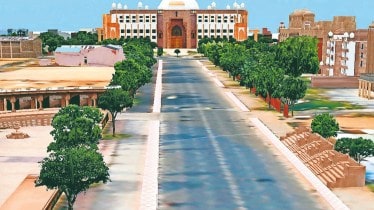Digital twins are no longer futuristic concepts – they are becoming the foundation of how cities and industries plan, build and operate. With India’s massive infrastructure push under initiatives like the National Infrastructure Pipeline (NIP), there’s an urgent need for smarter tools that ensure long-term impact and efficiency. Enter digital twins – virtual replicas of physical infrastructure that simulate, test, and optimise every stage of a project. Fueled by advances in AI, cloud computing, and internet of things, they are seen as the “Google Maps” for infrastructure planning – offering visibility, scenario modeling, and predictive insights to help avoid cost overruns and accelerate development.
From simulation to safety
Cities like Singapore have created city-wide digital twins to simulate traffic flow, energy usage, and urban development. This helps urban planners make data-backed decisions for smarter, more sustainable urban environments. Closer home, Jaipur has adopted Dassault Systemes’ 3DEXPERIENCE platform to create a digital twin of the city, enabling better urban planning, infrastructure management, and citizen services by breaking down departmental silos and fostering collaboration. This initiative allows administrators to simulate development projects, predict impacts, and engage residents more effectively in urban planning.
On July 24, 2024, Pune experienced extreme rainfall in just 24 hours, turning streets into waterways and overwhelming existing flood monitoring and emergency systems. To ensure Pune is better prepared, Genesys International, a homegrown player in mapping, survey, and geospatial services, worked with the Pune Municipal Corporation to build an integrated command-and-control centre powered by 3D Digital Twin data. The company provided flood risk simulations, helping authorities identify vulnerable areas and guiding evacuation planning, drainage upgrades, and resource deployment to make responses faster and more effective.
“We combine elevation models with rainfall simulations and “what-if” modelling to predict how water spread might impact specific neighbourhoods during heavy downpours,” said Sajid Malik, chairman & managing director, Genesys International. “We see digital twins as the bridge between physical and digital India: a common, precise, and measurable layer that supports safer mobility, smarter urban planning, and more transparent governance. As India urbanises at unprecedented speed, digital twins will be central to making our growth sustainable and inclusive,” he added.
Industrial impact
Beyond smart cities and urban planning, industries that rely on complex physical assets or processes stand to benefit immensely. According to Sudha KV, vice-president, Dell Technologies, manufacturing and automotive sectors are leveraging digital twins to optimise product design, streamline assembly lines, and conduct predictive maintenance to avoid downtime. The technology’s ability to integrate IoT, edge computing, and AI makes it a strategic tool for improving efficiency, reducing waste, and accelerating innovation.
“At Siemens, we see them as essential to enabling the energy transition and autonomous buildings,” said Robert HK Demann, head of smart infrastructure business that makes up over 50% of the German’s conglomerate’s revenue. In commercial real estate and campuses, Siemens’ digital twin technology is used to simulate building performance, optimise energy consumption, and enhance occupant comfort. AI algorithms help predict HVAC (heating, ventilation, and air conditioning) loads and automate controls for efficiency. With increasing investments in renewable energy and infrastructure, digital twins are becoming a strategic tool for planning, operations, and predictive maintenance, he added.
Dassault Systemes refers to digital twins as virtual twins to emphasise a more advanced, interactive, and predictive capability beyond a simple digital replica. “Today, in macro-sectors like manufacturing, infrastructure and construction, the most advanced companies that create airplanes, vehicles, machines, robots, or high-tech and med-tech equipment, are using our virtual twins technology to ensure the quality, performance and safety of their products and services,” said Deepak NG, managing director, Dassault Systemes India.
River Mobility, an Indian EV startup, is using Dassault Systemes’ 3DEXPERIENCE platform to accelerate electric vehicle development, while drone manufacturer Axldrone has cut design cycles and costs significantly through simulation-driven workflows. Similarly, Mahindra & Mahindra is leveraging the Dassault platform to expedite its new product development process.
As enterprises shift toward real-time, data-driven decision-making, digital twins will play a key role in shaping competitive advantage. As per a report by Nasscom, while 90% of enterprises are aware of digital twins, actual deployment is slower and more fragmented, often taking 12-24 months per implementation level. Budget constraints and patchy digitalisation remain challenges, with only 25% of companies having formal virtual twin budgets and most still in pilot stages.
Although digitalisation levels vary across sectors, Indian industries are rapidly advancing and closing the gap with mature markets, said Jaap-Harm Westhuis, technology, innovation & product development director, SBM Offshore, a Dutch-based group of companies selling systems and services to the offshore oil and gas industry. “A skilled talent base, supportive government policies, and rising investment in AI, machine learning, and cloud-based applications are accelerating adoption,” he added.
